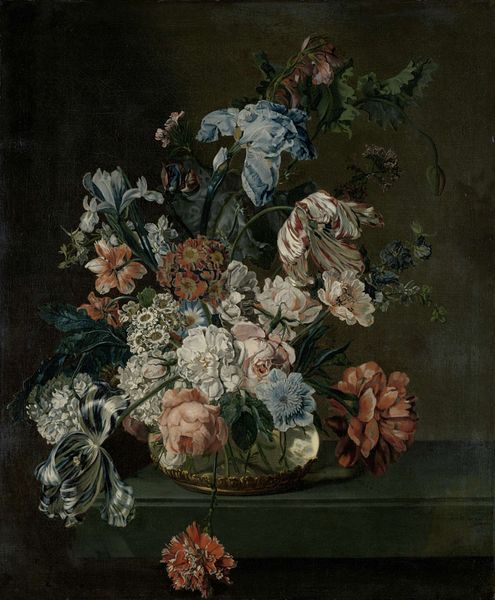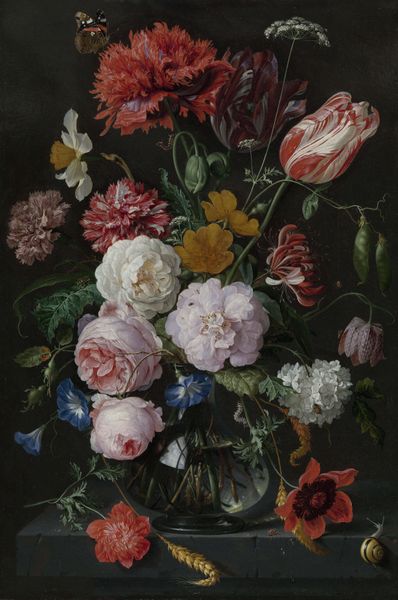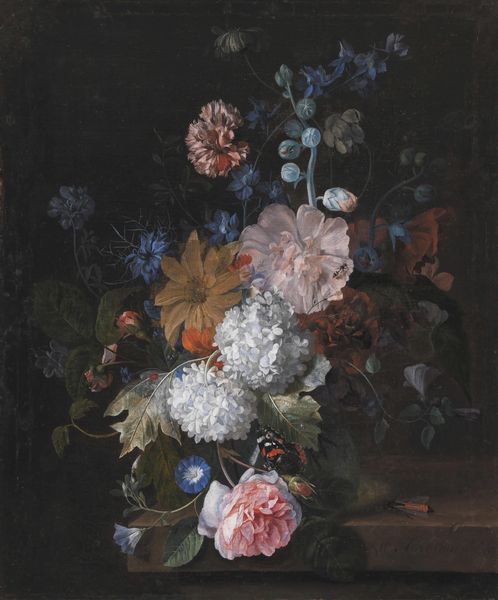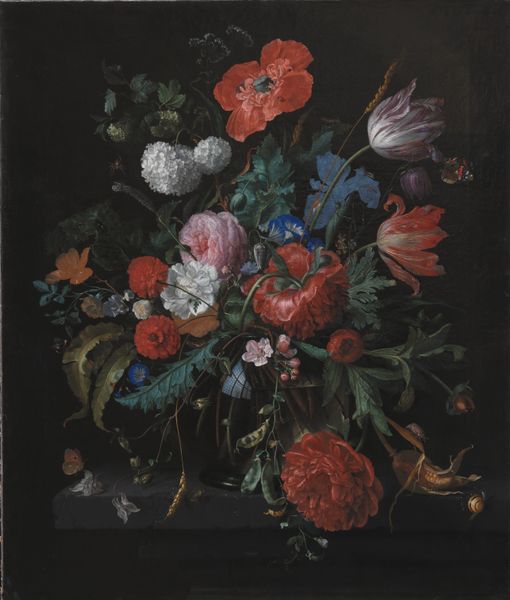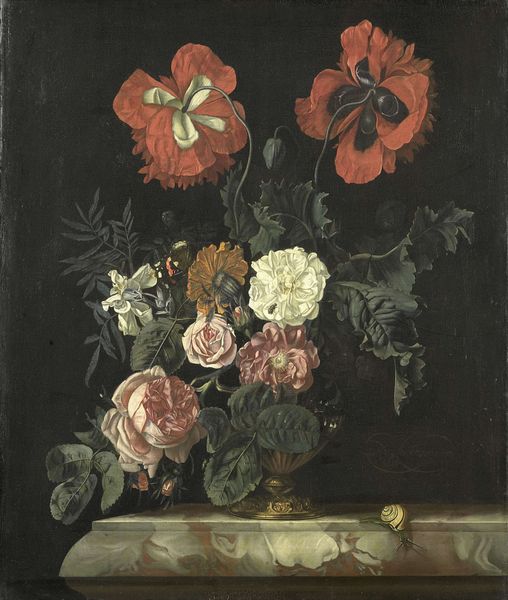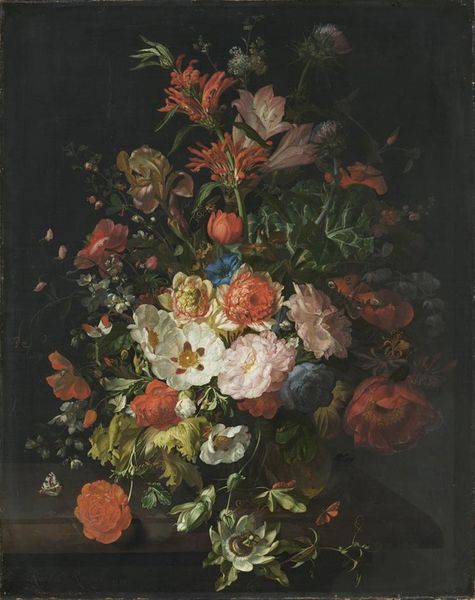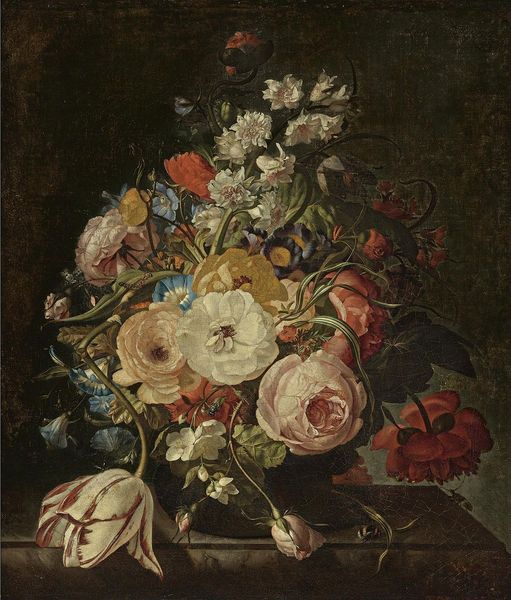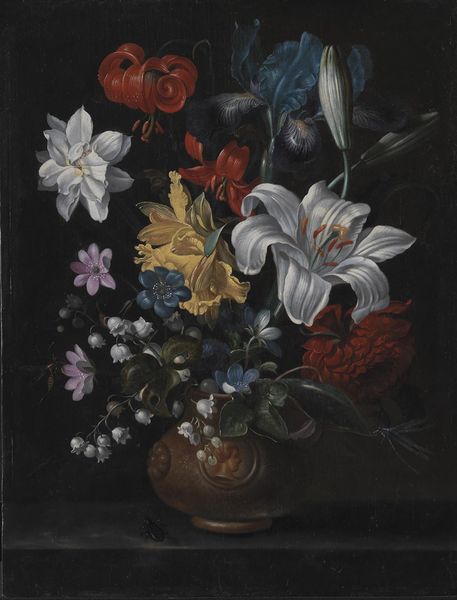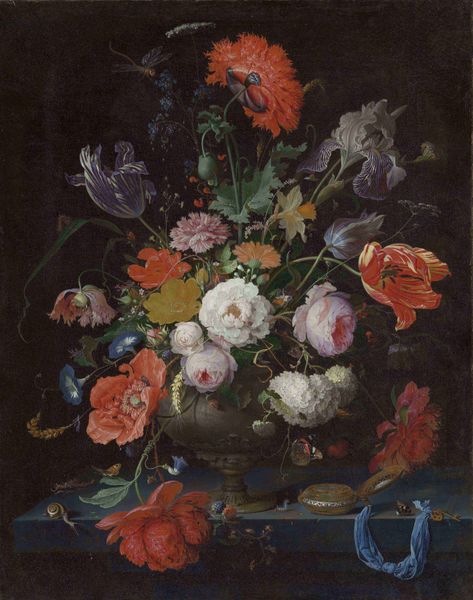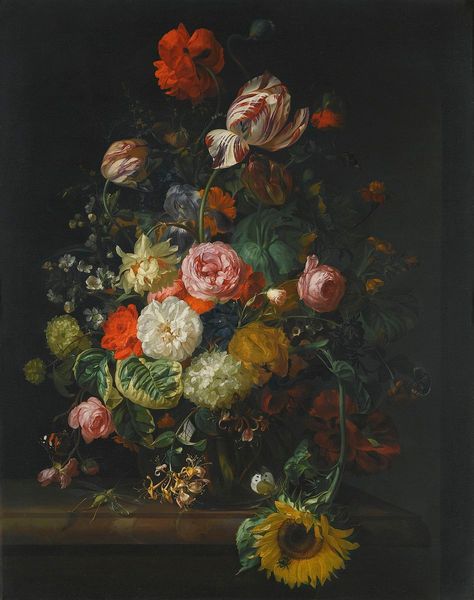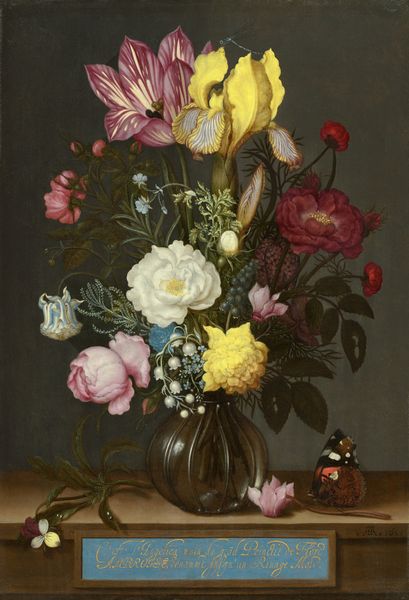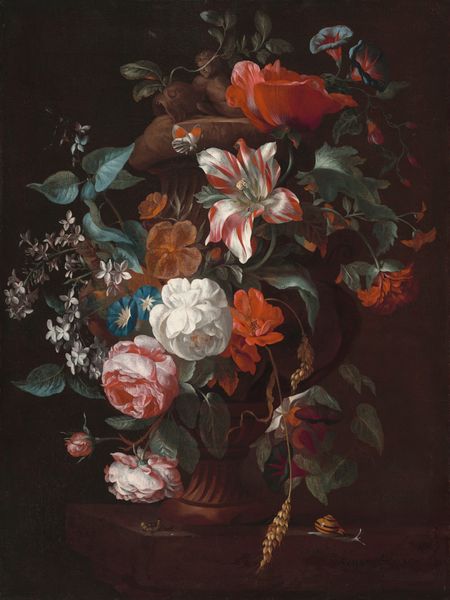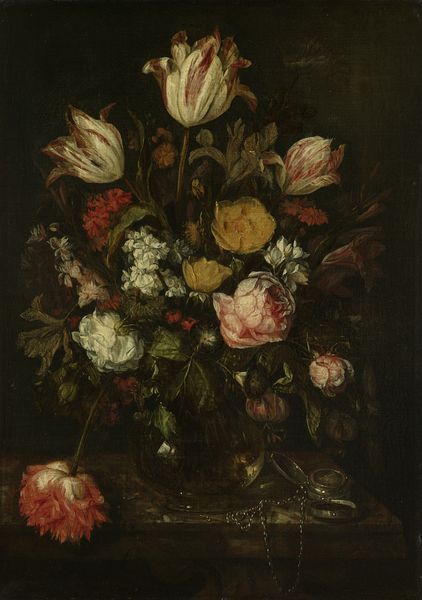
Copyright: Public domain
Curator: "Flowers," painted around 1780 by Luis Paret y Alcázar. It’s an oil on, seemingly, canvas, falling within the still-life genre of the Romanticism movement. Editor: Mmm, immediate impression? It’s moody. I feel like I’m walking through a very fragrant, slightly overgrown, secret garden at dusk. Bittersweet. Curator: That’s quite perceptive. Alcázar was painting during a time of significant political and social upheaval. The rigid structures were collapsing in many European nations, a new sensibility of the personal and emotional began permeating the arts and life. Think about the role of the French and Spanish courts: they wielded substantial cultural power. Do you see any hints about how the artist might relate to that social context? Editor: Maybe, I do find the dark background juxtaposed with such meticulously detailed blossoms suggests the preciousness of beauty, in contrast to, perhaps, some sort of surrounding gloom? Also, notice the blue ribbon binding the stems. The arrangement seems intentionally opulent and slightly precarious all at once. It gives me that "beautiful things can't last" vibe. Like, a vanitas still-life— a rumination on beauty, mortality, decay—but told in this unique Romantic vernacular. What was Alcázar’s relationship with the Spanish court at the time? Curator: Paret served as a court painter for Charles III, before suffering from courtly intrigue and exile, followed by a rejoining with Charles IV later on. In painting subjects that appear to celebrate a royal sense of elegance, his flower paintings could then be seen as both ornamental and fraught. We should remember, flowers have long carried symbolism regarding gender and ephemeral pleasure. Editor: Fascinating! See, the composition itself—that oval framing—gives a sense of almost…peeking into a contained world. Maybe that’s his reflection on those gilded halls, full of vibrant lives contained by a world of protocol? Curator: Interesting interpretation. Editor: I always knew flowers can tell so many different stories! Curator: And here’s a lens into how. Thank you for adding that insight.
Comments
No comments
Be the first to comment and join the conversation on the ultimate creative platform.
